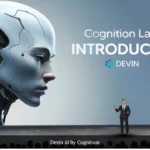Late last week, Apple made a quiet but important announcement, releasing the first open-source release of Pkl (pronounced Pickle), a revolutionary programming language designed for easy programming on language or structured assets governed by non-functional types such as JSON, YAML, and others. Pkl emerges as a solution to the limitations imposed by these traditional frameworks.
Challenges in traditional languages
Immutable languages fail when dealing with complex systems. The lack of annotations in JSON, YAML, and property names results in repetitive code and a high risk of system errors due to build failure.
Also Read- Microsoft surpasses Apple in market value
Vision and Goals of Pkl
Pkl was born from the belief that a good programming language is a hybrid of static general-purpose programming languages. The latest Pkl website confirms this vision, stating that Pkl aims to simplify declarative literacy while incorporating capabilities borrowed from general languages around.
Enhancements without Complexity
To overcome the shortcomings of conventional formats, developers often resort to ancillary gear, including unique common sense to cope with particular needs. However, this technique can turn configurations into quasi-programming languages, tough to understand and write. Pkl, then again, seeks to offer the quality of both worlds without sacrificing simplicity.
Key Features of Pkl
Apple asserts that Pkl combines the simplicity of declarative languages with the strength of general-reason programming languages. Pkl permits coders to make use of familiar language functions like instructions, capabilities, conditionals, and loops. It facilitates the advent of abstraction layers, and code sharing through package advent, and gives an unbroken improvement with its first-rate-in-class IDE integrations.
Pkl’s Overarching Goals
Apple outlines three overarching goals for Pkl
- Safety: Catch validation errors before deployment.
- Scalability: Suitable for both simple and complex use cases.
- User Experience: A joy to write, supported by top-notch IDE integrations.
Editor Support and Accessibility
Pkl comes geared up with a “fine-in-elegance” editor aid, guiding users through the configuration technique and supplying actual-time feedback. Apple encourages interested customers to discover Pkl through its academics or enjoy it regionally by downloading Pkl’s CLI, promising an interesting adventure beforehand.
Apple’s Ongoing Innovations
Beyond Pkl, Apple continues its groundbreaking paintings to make coding greater on hand. The widely recognized Xcode application stands as a testament to Apple’s dedication, serving as an effective tool for constructing apps on iPhone, iPad, and Mac. Speculations hint at the advent of effective AI to iOS 18 and beyond at WWDC 2024, with capability upgrades to Xcode.
Pkl in Comparison to General-Purpose Languages
Despite their boldness, trendy languages like Kotlin, Ruby, or JavaScript are not ideal for configuration because of their focus on defining and validating facts. Pkl shows up as an adaptable option that bridges the gap between fashionable-reason languages and static languages. As opposed to DSLs bound to specific environments, Pkl can be easily integrated into a variety of utility runtimes.
Conclusion
Apple’s Pkl offers a combination of robustness and simplicity, thereby bringing about a paradigm shift in worldwide configuration programming. The programming landscape is about to undergo a metamorphosis as developers investigate the possibilities that Pkl offers. In this new paradigm, configurations become more than simply a need; they are an inventive and effective way to describe code.











Add Comment